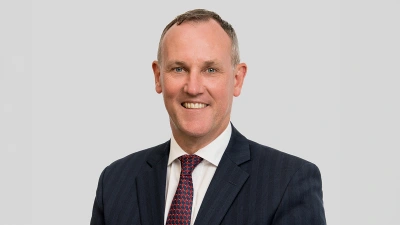Best offence is defence
Defensive assets and government bonds have turned out to be a far better bet when compared to many supposed income orientated hedged funds and domestic asset classes, and should be considered as an important part of any diversified portfolio, according to a fixed income specialist.
Speaking in the midst of the turmoil in the global credit markets, head of fixed income Schroders Australia Simon Doyle said recent events have been a painful reminder on the merits of diversification and understanding the roles different assets play in sound portfolio construction.
“Over the last three years I have been asked repeatedly ‘why invest in government bonds?’ and heard comments along the lines of ‘they’re boring, they’re yielding less than cash’ etcetera. Interestingly Australian Government bonds have returned +1.6 per cent since the end of May, compared to just +0.6 per cent for Australian credit, -11 per cent for listed property trusts and -9 per cent for the ASX 200,” Doyle said.
“While they may not be double digit returns, government bonds are positive nonetheless, not to mention 11 per cent ahead of equities.”
According to Doyle, there is nothing wrong with investors seeking to maximise their returns relative to the risk free rate, but for this to work investors need to identify an appropriate risk free rate.
“To put it another way, for an investor with medium to longer term liabilities, cash may not be the appropriate risk free asset,” he said.
Doyle believes that focusing on cash plus returns does not always help investors meet long-term investment objectives, and that it is a far better idea to maximise returns relative to a risk free rate, that is, bonds, that match the duration of the investor’s liabilities.
The other danger of a cash plus model is the inherent risk involved, which is made more salient in periods of market dislocation where capital preservation is paramount.
“Efficient portfolios are those that maximise return per unit of risk . . . As recent events in the sub-prime and structured credit markets have proven, risk as defined by historic return volatility is a very poor predictor of the risk that investors care about the most, namely downside risk,” Doyle said.
Recommended for you
The Reserve Bank of Australia has delivered its first rate decision since the introduction of a new board structure last month.
ASIC was active in the first quarter of 2025 with several financial adviser bannings and court action, while the FSCP also handed down outcomes to advisers.
With a joint venture announced between WT Financial and Merchant Wealth Partners, the firm may have a US background, but partner David Haintz has a long history with Australian financial advice.
The big four bank is set to see $40 million per annum in cost savings as it continues to migrate customers from its Asgard wealth platform to BT Panorama by FY26.














